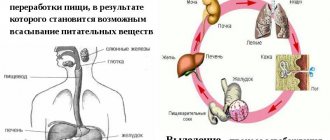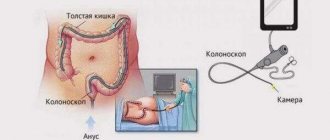To the deep regret of doctors, many are convinced that good alcohol is not harmful, and is even beneficial in small doses. In fact, any alcohol is a poison that poisons the body. It doesn’t matter whether it’s a glass of expensive cognac or cheap vodka – a person will experience intoxication. For some it will cause a headache, while for others it will face more serious consequences. In the latter case, you should seek help from a doctor - perhaps alcohol has already caused significant harm.
Beer is recognized as the most consumed alcoholic beverage. Dry statistics say that on average a person consumes about 60 liters of intoxicating drink per year. And despite the fact that the Russians have not yet caught up with the Czechs or Germans, the trend towards increasing beer consumption is not good. It is largely based on a general misconception spread by advertising and stores that do not classify beer as alcoholic beverages. Thus, most residents are sure that this drink is beneficial for the body due to the fact that it is not very strong and contains barley. In reality, all the beer on the market is powdered, and therefore its benefits are out of the question.
Why shouldn't you get carried away with beer?
Lovers of an intoxicating drink must learn a simple truth: this is not water, and therefore they should not quench their thirst. Yes, it's a low-alcohol drink, but still alcoholic. For example, some beers contain between 10 and 14% alcohol. Simple arithmetic makes it clear that a bottle of this type is equal to 100 g of vodka. Moreover, daily consumption of beer, which is characterized by fermentation processes, has a negative effect on the esophagus and stomach. Moreover, it aggressively affects the mucous membrane, destroying it. After all, with regular consumption of a foamy drink, the glands located in the walls of the stomach, which are responsible for the production of gastric juice, first produce an excessive amount of mucus, and then stop doing so altogether.
Therefore, it is not surprising that your stomach hurts after drinking beer. After all, gastritis is a frequent companion of drink lovers. In this case, doctors make a categorical diagnosis – chronic alcoholic gastritis. This disease is accompanied by a number of unpleasant symptoms: chronic fatigue, decreased performance, abdominal pain, a feeling of heaviness and a metallic taste in the mouth.
Beer also has a destructive effect on the liver, whose main function is to cleanse the body.
With a regular load in the form of an intoxicating drink, the organ ceases to cope with other toxic substances that enter the body. Moreover, abuse of the popular foamy drink leads to a person acquiring chronic beer hepatitis, which is often asymptomatic. They learn about it already when cirrhosis of the liver is in full bloom. The pancreas is also affected, and it stops producing the enzymes necessary to break down nutrients.
It is worth giving up drinking beer for the sake of the kidneys, which are designed to regulate the water-electrolyte balance and acid-base composition of the human body. Consuming it disrupts the natural functioning of the kidneys, leading to an imbalance. Polyuria, or increased urination, is caused by the walls of the kidneys being irritated by alcohol. This is fraught with the leaching of micro- and macroelements, vitamin C, potassium and magnesium from the body. The results of this affect the general condition of the person, who will inevitably begin to complain of heart pain, bad mood and loss of strength.
As you can see, there are many reasons for pain in the abdominal area after beer. That is why, at the first signs of poor health, it is necessary to turn to a specialist for help and competent advice. The doctor will suggest taking tests that will show the true state of affairs and help prevent trouble. It is worth remembering that abdominal pain masks serious heart diseases - myocardial infarction and angina. Self-medication in this case is fraught with complications.
Justification of the hypothesis
As part of the European Prospective Study of Cancer and Nutrition, this issue was raised as a key issue in determining which foods are most harmful to the health of modern people. The statistical sample consisted of 7,876 men and 12,749 women. Yes, the fair half of humanity is also susceptible to this problem. Why does beer make women's bellies grow? They probably keep company with their partners and indulge in chips, smoked meats and snacks, despite the fact that their body is completely subject to hormonal confusion once a month.
How to recognize abdominal pain after beer?
To quickly respond to abdominal pain, you need to know the main symptoms of the most common diseases caused by beer. Thus, a person who regularly drinks alcohol may experience acute gastritis, chronic alcoholic gastritis and pancreatitis. Each disease has its own symptoms, knowing which, a person will be able to promptly seek medical help.
So, acute gastritis, as a rule, is provoked by excessive doses of alcohol, which causes inevitable disruption of the esophagus, stomach and small intestine. It is enough to drink beer every day to achieve persistent intoxication of the body, which causes changes in the entire digestive system. Symptoms of acute gastritis are:
- severe nausea and vomiting, which may be accompanied by blood;
- unexpected sharp pain in the abdominal cavity of such intensity that a person literally cannot straighten up;
- swelling of the throat and swelling of the tongue;
- low blood pressure and increased heart rate.
Chronic alcoholic gastritis develops against the background of systematic binge drinking. The main symptoms of the disease are:
- pain and feeling of heaviness in the abdominal cavity;
- heartburn, nausea and vomiting;
- constipation and diarrhea.
Pancreatitis is diagnosed in patients who tend to drink low-quality beer. A faithful companion of pancreatitis is chronic alcoholic gastritis. In the presence of gastritis, an experienced physician will definitely examine the liver in order to prevent the disease or, conversely, identify it. The main symptoms of the disease are:
- pain in the navel area;
- increased pain after another drink or fatty food;
- nausea and vomiting up to loss of consciousness.
If after drinking beer a person feels one of the symptoms described, then it’s time to seek help from a doctor.
Other works on this topic
Oddly enough, the issue of caloric content and harm to health of beer has often become the object of research by various scientists from around the world. After scientists from Japan, as part of a team of German colleagues from a statistical sample of 40 thousand people, established the average waist size, the question of harm disappeared by itself. So, for example, among connoisseurs of intoxicating drinks, this figure was 83.5 cm on average, while among those who preferred stronger drinks, the value was much higher. Yes, of course, one cannot deny the fact that the formation of an additional fat layer is influenced, among other things, by geolocation, rhythm of life, origin and genetic factors, but the “naked” theory still says that it is not beer that is the cause of partial obesity.
How to overcome abdominal pain after drinking an intoxicating drink?
The best decision would be to consult a doctor, who, based on the symptoms and consequences of the negative effects of alcohol on the body, will prescribe medication. If a person who drinks too much is unable to get an appointment with a doctor quickly, you can try to relieve abdominal pain with the help of folk remedies. It is worth remembering that all of them are aimed only at eliminating symptoms; they cannot be used to cure gastritis or pancreatitis. Moreover, some of these methods can only make the condition worse. Therefore, before deciding to take such a step, it is worth weighing the pros and cons.
https://youtu.be/XlWcE7CVUtU
So, traditional medicine recommends the following for severe abdominal pain caused by drinking beer or another alcoholic drink:
- Every 2 hours take 1 tbsp. l. vegetable oil, washed down with mint or chamomile tea;
- Chamomile tea is one of the recommended drinks that can relieve pain;
- Taking a couple of black peppercorns with 1 tbsp is considered effective. water;
- You can also try brewing “tea” from currant leaves and plum fruits.
Myth or reality?
There is an opinion that the result of extra pounds and a couple of new folds just above the bikini area is not foam, but a snack to go with it. Therefore, quite expectedly, various questions of the format arise: is it true that beer makes your belly grow? The extra “bag” in the front is to blame not only for the intoxication, but also for the insatiable appetite of the eater. Yes, one more chicken for the “fair one” will increase weight and lead to new moral torment. In addition, the belly, which is the subject of discussion in this article, grows solely due to beer abuse and gluttony. If you consume alcohol in more reasonable doses and lead a predominantly active lifestyle, then both men and women will not face local obesity.
Diet for stomach pain after beer
Before meeting with the doctor, the patient must adhere to a strict diet, excluding fatty, spicy, smoked and fried foods, fresh baked goods and sweets from the diet. Beer, of course, should also not be on the table during this period. Attention should be paid to lean boiled meat, fermented milk products, strong sweet tea and crackers. Of the cereals, oatmeal will be effective, as it is well absorbed by patients. During this period, you should not burden your stomach with excessive overeating; it is better to remain slightly hungry.
An approximate menu for a patient with gastritis while drinking alcohol may look like this.
- Breakfast: oatmeal with water, a soft-boiled egg and sweet tea with crackers (if you have diarrhea, you can use strong tea).
- Second breakfast: a glass of kefir, fermented baked milk or yoghurt without additives, 100 g of dry bread.
- Lunch: semolina soup in water without spices, 150 g of boiled lean meat (chicken, turkey, rabbit), a couple of slices of dried bread. A glass of compote.
- Afternoon snack: a glass of chamomile or rosehip infusion.
- Dinner: 200 g of boiled or baked low-fat fish, 10 g of boiled potatoes (mashed potatoes can be used, but without eggs, butter and milk), one tomato. Sweet tea with one cracker.
- Before bed: a glass of kefir, fermented baked milk or yogurt without additives.
https://youtu.be/UzLwYFSZUXg
Portions should be small, the patient should feel slightly hungry after each meal. Also, during the day you should definitely monitor your water intake - at least 2 liters per day. Dinner should be 3 hours before bedtime, and it is better to drink kefir 30 minutes before bedtime.
Do women suffer?
It is a rather controversial question whether women are susceptible to beer belly. On the one hand, yes, since obesity itself affects the body. Moreover, taking into account the natural predisposition, extra pounds appear more often and have a greater impact on the waist. However, on the other hand, excess weight is better redistributed by a woman’s body than by a representative of the stronger sex. Regarding the fact that beer makes women's bellies grow, reviews are mixed. Perhaps the most plausible theory is that extra pounds appear, but do not affect the size of the abdomen to the same extent as men are susceptible to it.
The Dangers of Beer Belly
Weight gain against the background of daily sipping and snacking on foam leads to the following problems:
- increased risk of developing diabetes;
- dysfunctions of the cardiovascular system;
- development of chronic arterial hypertension.
Think about it! Beer contains cobalt, which provokes fatty heart muscle, and carcinogens present in the drink lead to the appearance of cancerous tumors.
Foam also provokes the accumulation of visceral fat, which forms on the walls of internal organs. This explains the elasticity of the bellies of beer drinkers; such a belly cannot be retracted. Visceral fat formations put pressure on internal organs, significantly impairing their functioning.
Gases: where do they come from?
What gases live in our body and where do they come from?
Everyone has gases. Most gases are a waste product of bacteria that live in the intestines.
1. Stomach Normally, the stomach contains about 900 ml of air daily. Air gets there when eating and drinking. For example, with a drunk glass of water, up to 200 ml of air can enter the body. Eating quickly helps you swallow more air. Excess air accumulated in the stomach is expelled from the body during belching.
2. Small intestine A physiological chemical reaction occurs in the small intestine - hydrochloric acid (stomach contents) mixes with alkali (intestinal contents), and a reaction occurs with the release of carbon dioxide. Some of the carbon dioxide is absorbed into the blood, and some moves further and leaves the large intestine.
3. Large intestine In the large intestine, as a result of bacterial fermentation of intestinal contents, gases are formed, which include hydrogen, carbon dioxide, sulfur dioxide, mercaptan and methane in various proportions. Mercaptan and methane are compounds that give intestinal gas an unpleasant odor. In addition, they are highly toxic and flammable.
The body has a special detoxification system, thanks to which these toxic intestinal gases do not circulate in the bloodstream, but are eliminated.
One liter is approximately the same amount of gas released by the human body per day on average. The composition of these gases can change significantly depending on what food you eat, what air you breathe during the day, depending on the types of bacteria in your gut, and depending on how long you retain the gases inside your body.
Typically, your rectum will release 9% nitrogen, 21% hydrogen, 9% carbon dioxide, 7% methane, 4% oxygen and 1% hydrogen sulfide (this component gives the unforgettable aroma of your farts) during a fart.
The smell of this gas is formed by tiny amounts of components containing sulfur and nitrogen, which are formed in our body due to incompletely digested food and due to bacteria living in the rectum. The sulfur compound is mainly hydrogen sulfide and mercaptan (an organic sulfur compound in which oxygen is replaced by sulfur). The nitrogen compounds are mainly skatole and indole.
99 percent of the gas you produce doesn't smell. The unpleasant odor of gases is largely due to the presence of sulfur compounds in them, such as hydrogen sulfide. In the process of converting food into useful nutrients, bacteria produce a smelly byproduct of hydrogen sulfide (the same stench that comes from rotten eggs).
While not all foods with complex carbohydrates contain sulfur, beans, onions, cauliflower, Brussels sprouts, broccoli, milk and many other foods do.
The gaseous response of bacteria to nutrition varies from person to person (since everyone has a unique "collection" of microorganisms), there are basic gas-generating ingredients:
- Fructose is a natural ingredient in plants such as onions, corn, wheat and even pears. Often found in sugar syrup for soft drinks and fruit drinks.
- Lactose is a sweet natural ingredient that is added to various foods.
- Raffinose - found in grains and various vegetables.
- Sorbitol – Found in almost all fruits, it is also used as an artificial sweetener in dietary products. Yes, sugarless gum, candy, and anything else deceptively sweet from sorbitol can cause bloating.
Foods that are rich in sulfur include cabbage, eggs and meat. It is because of this food that “human” gas may have a stronger odor.
Interestingly, beans and legumes produce large amounts of gas, but the odor is not as strong. Another remarkable fact is that the pressure that is exerted on our intestines due to the gas accumulated in it is sometimes twice as much as the pressure of air pumped into a regular car inner tube!
By the way, women fart no less often than men. According to several studies, when eating the same food, women tend to release even more concentrated gas than men.
How to get rid of fatty deposits?
If you hope to remove excess fat at home and continue to sip beer, then nothing will happen. It is impossible to correct your figure while continuing to lead your usual lifestyle. Start small - reduce the amount of intoxicating drink you consume (and ideally, give it up altogether). This will reduce the size of your stomach. Add to this some feasible physical activity.
p, blockquote 10,0,0,1,0 —>
Visceral fat is characterized by a curious feature - when playing sports, it is broken down first. Fat deposits are especially active in terms of metabolism, so the body uses them when there is a lack of calories.
p, blockquote 11,0,0,0,0 —>
Also, to reduce the size of your belly, it is recommended to give up your usual beer snacks and adjust your diet. And if you really can’t live without beer, then drink it during the daytime, and not before bed.
p, blockquote 12,0,0,0,0 —>
What's the result?
The immediate culprit for the appearance of beer belly is not beer. It only acts as a catalyst for problems leading to obesity. To prevent such a situation, reduce the volume of foam and include sports in your life. Then ugly fat will not become a hindrance to gatherings with a glass of intoxicating drink.
p, blockquote 13,0,0,0,0 —> p, blockquote 14,0,0,0,1 —>
Today on the “Lose Weight Without Problems” website we are discussing the problem of the appearance of a beer belly in women. Why is it growing? How to deal with it?
What are the dangers of drinking beer for women? And what happens at this time in the body? More on this below.
What does drunkenness lead to?
Alcoholic drinks dull the sensation of pain, so if a person experiences stomach pain after alcohol or a headache from beer, this indicates the development of serious illnesses that require immediate treatment:
- Cholecystitis. It manifests itself as severe pain in the right hypochondrium, yellowing of the skin, and nausea. The acute form of the disease requires immediate surgical intervention.
- Pancreatitis. It manifests itself as unbearable girdle pain. This disease is accompanied by constant vomiting, dehydration, and flatulence.
- Stomach ulcer. Nausea begins, bloody vomiting, stomach pain after drinking alcohol. If excessive bleeding begins and the skin turns pale, you must immediately call an ambulance.
Long-term binges and frequent hangovers can lead to the following symptoms:
- nausea, repeated vomiting;
- frequent belching (burning in the stomach);
- diarrhea, heaviness in the abdomen;
- severe pain in the stomach or left hypochondrium;
- fever;
- weakness, malaise.
Damage to the mucous membranes of the stomach of a drinker under the influence of a frequent hangover causes the development of gastritis. This is characterized by:
- bitter taste in the mouth;
- pain syndrome;
- pressure surges;
- gag reflex;
- swelling and inflammation of the tongue;
- changes in appearance and skin;
- the appearance of swelling, rapid pulse;
- disruption of defecation processes.
If you are thinking about how to restore your body, then it is necessary to treat such a pathology by completely abstaining from alcohol-containing drinks. If your stomach hurts from drinking alcohol, the patient should contact your doctor for consultation and a series of diagnostic procedures.
Important: Self-treatment of pain with medications can lead to the development of an acute form of the disease into a chronic one.











